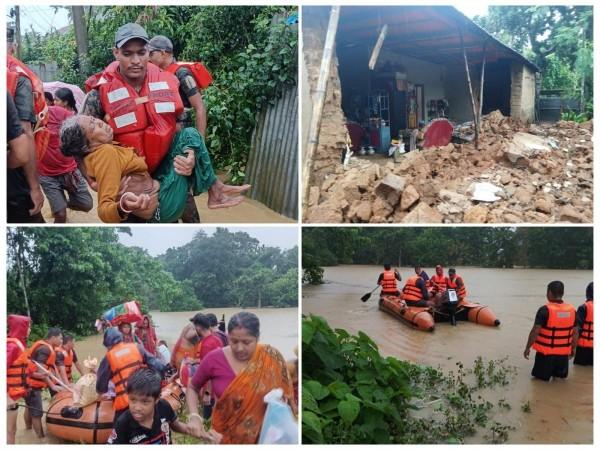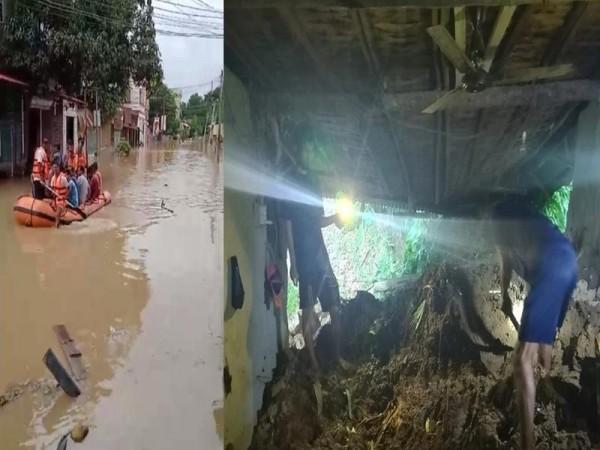
The northeastern Indian state of Tripura is struggling with a worsening flood situation, with the death toll rising to 10 and over 34,100 people seeking refuge in 331 relief camps across all eight districts. The incessant heavy rains since Monday have wreaked havoc in the state, causing landslides and drowning incidents that have claimed lives and injured people. The most affected districts are South Tripura, Gomati, and Khowai, where the majority of the deaths, including a 12-year-old girl, have been reported.
The Chief Minister of Tripura, Manik Saha, has been proactive in addressing the crisis. He has sought the deployment of additional National Disaster Response Force (NDRF) personnel and has been in communication with Union Home Minister Amit Shah, apprising him of the dire situation in the state. The Home Minister has assured all possible support during this crisis, a gesture that has been gratefully acknowledged by the Chief Minister.
The floods have caused significant damage to infrastructure, with over 1,055 houses either fully or partially damaged and hundreds of trees uprooted. The state's transportation systems have also been severely impacted. The Northeast Frontier Railways has had to cancel 10 local trains due to damaged railway tracks in the Gomati district. The government has ordered the closure of schools on Wednesday and Thursday due to the floods.

The Water Resource Department officials have reported that most of the prominent rivers in Tripura are either flowing above critical or danger levels. The state's main river, Gomati, has crossed the 'extreme danger level' in many places of Gomati and Sepahijala districts due to the continuous rainfall. This has led to the inundation of a large number of human habitations, urban and rural areas, and many important highways. Crops and other important assets have been damaged in huge areas in all eight districts.
The India Meteorological Department (IMD) has forecasted that heavy to very heavy rainfall is very likely to continue over Tripura for the next five days. This prediction suggests that the situation could worsen, potentially leading to more displacement of people, damage to infrastructure, and further loss of life and property. The authorities are likely taking precautions and preparing for potential rescue and relief operations based on these forecasts.
The NDRF plays a crucial role in the flood relief efforts in Tripura. They are responsible for rescue operations, helping evacuate people from flooded areas, and providing immediate relief. They are trained to handle such emergencies and are equipped with necessary tools and boats to navigate through floodwaters. The exact number of teams deployed and their specific operations are not detailed in the provided information, but their presence is vital in saving lives and providing assistance to those affected by the floods.
Historically, India has faced several similar flood situations, particularly during the monsoon season. For instance, the 2019 floods in Assam and Bihar affected over 13 million people, causing significant loss of life and property. The 2015 floods in Chennai, caused by the heaviest rainfall in over a century, resulted in over 500 deaths and displaced over 1.8 million people. These historical events underscore the importance of effective disaster management strategies and the need for improved infrastructure and planning to mitigate the impact of such natural disasters.

















